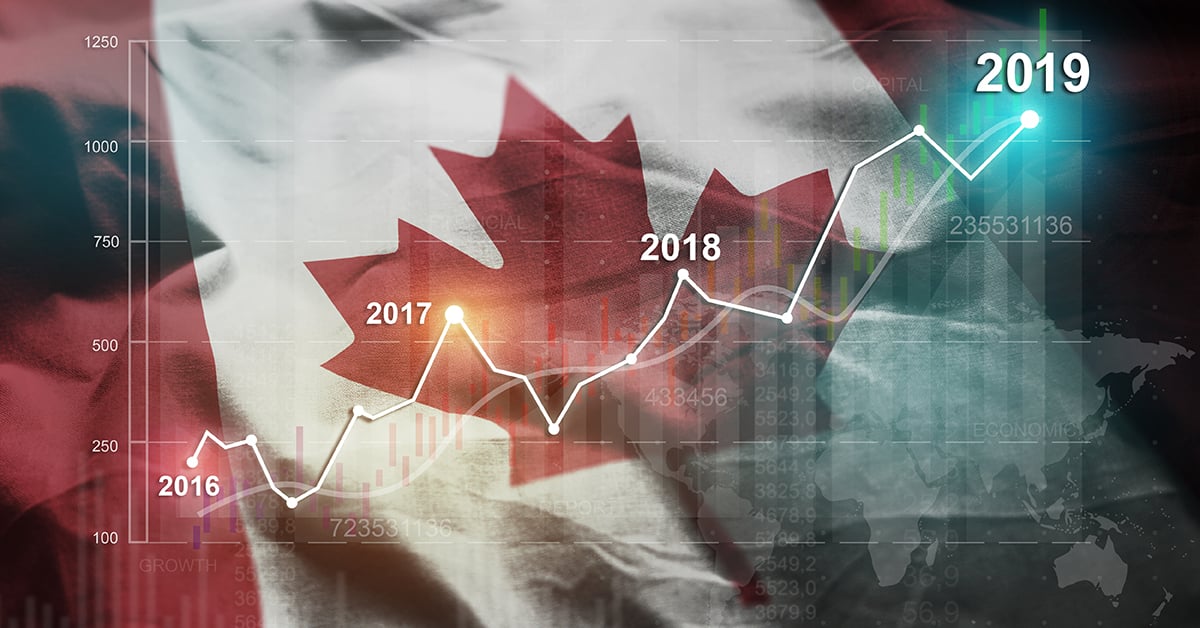Easy money puts big Canadian corporates in a good position for post-pandemic recovery, but for smaller companies funding remains tough.

Like virtually all corporate executives in Canada, Pedro Farah, the CFO of Nutrien, has been working from home since early last year when the coronavirus first surged across much of the country. One of the world’s largest producers of agricultural crop inputs like potash, phosphates and nitrogen, the company closed its eight corporate offices in Canada, the US, Argentina and Australia more than a year ago.
“We’re an essential industry so we continued to operate our mines and factories without any layoffs or employee furloughs,” he says. The office in Melbourne, Australia, however, is the only one that Nutrien has so far reopened. Plans are to return to the head office in Saskatoon, Saskatchewan, next quarter.
It should be a happy office homecoming. With the prices of many agricultural commodities near record highs, Nutrien’s three businesses of potash mining, nitrogen/phosphate production and agricultural retail operations are now firing on all cylinders. “We had a difficult 2019, with trade wars, swine flu and the Australian fires; and then Covid-19 happened,” says Farah. “We were overdue for a recovery, and now it’s coming with a vengeance.”
Nutrien may be particularly well positioned, but the Canadian economy appears ready to fly in the year’s second half. The country’s vaccination program has been slow to ramp up but has accelerated over the last few months. With new coronavirus cases continuing to fall—most notably in the hard-hit Toronto metropolitan area—pandemic restrictions are easing across most regions of the country. Economists expect that cooped-up Canadian consumers, flush with approximately $250 billion in additional savings they’ve socked away in the last year and a half, are ready to spend.
“Our expectation is that it will be a strong second half after we get through this last major wave [of the coronavirus],” says Nathan Janzen, a senior economist with Royal Bank of Canada. He estimates GDP growth of 6.3% this year after a 5.4% contraction in 2020. “We think the most likely case is that the virus threat diminishes going forward and that the economy will be back to its pre-pandemic level by the third quarter.”
The Canadian economy has already surpassed expectations. An April GDP decline of 0.8%—largely driven by a stay-at-home order in Toronto to combat a third wave of Covid-19—was the first drop in monthly economic activity since the 11.6% plunge in April last year. “There’s a mismatch between the GDP recovery and the labor market [unemployment remains elevated], but we’re now close to where we were pre-pandemic,” says Robert Asselin, senior vice president of policy at the Business Council of Canada. “The economy proved to be resilient, with most industry sectors doing much better than expected.”
For large Canadian businesses, the financing environment has rarely been better. Investment-grade issuers like Nutrien can tap cheap and plentiful capital in the public debt markets in Canada and the US as well as the Canadian banking industry. “We’re producing a lot of cash now and we generally deleverage as we go up,” says Farah. “We haven’t needed equity capital, but we have ample access to debt capital at reduced rates.”
That’s true of most big Canadian businesses, thanks largely to the huge stimulus from the federal government to both households and businesses and the ultra-accommodative policies of the Bank of Canada. Like the US Federal Reserve and most other central bankers, the Bank of Canada acted quickly as the coronavirus first began to spread, cutting the overnight bank lending rate from 1.75% at the beginning of the year to 0.25% by the end of March 2020, where it remains. It also launched a quantitative easing program, buying up long-term Canadian government bonds and even authorizing the purchase of up to $10 billion in corporate bonds if needed.
That support, it turns out, was never needed. Corporate credit spreads did widen last spring, but they have generally been narrowing since then in tandem with the US debt markets. “Bond yields in the US determine rates here, and we’ve been importing stimulus from the United States,” says Andrew Kelvin, chief Canada strategist for TD Securities. “The terms for most borrowers are very accommodative, and generally rates are lower than they were pre-pandemic.”
The environment is much less friendly for small businesses. Too small to tap public debt markets, the Canadian small business community depends much more on a highly concentrated banking industry dominated by six very safe but somewhat risk-averse banks for most of its capital needs. Many of these businesses are in industries like retail, restaurants, travel and entertainment that have been crushed by the pandemic lockdowns.
“Our membership has been decimated,” says Corinne Pohlmann, senior VP of national affairs at the Canadian Federation of Independent Businesses, which represents over 95,000 small businesses. “It will take years for many of these businesses to come back.”
She credits the banking industry for showing some leniency with existing customers through the last year but says the backstop of government wage and rent subsidies, as well as low-cost and forgivable loans, have been the biggest factors in keeping small businesses afloat. “The government programs aren’t perfect, but 70% of small businesses say they’ve been critical to their survival,” says Pohlmann.
She hopes a growing push for open banking rules will lower barriers of entry to the industry for fintech firms and other nontraditional lenders. “Small businesses in Canada don’t have a lot of options when it comes to financing. We want to see more competition,” she says.
TD’s Kelvin, who formerly worked at the Bank of Canada, thinks the massive government support programs were the right response to the shock of the pandemic. “They learned from the 2008 financial crisis that it’s better to do too much too quickly than not enough,” he says.
The ongoing support for households and businesses has set the stage for a further surge in the economy. Indeed, the concern of many economists now isn’t supporting a weak economy but avoiding an overheated one that could ignite inflation. The consumer price index rose by 3.6% year-over-year in May, significantly above the 2% target of both the Bank of Canada and the Federal Reserve and its highest growth rate since 2011.
“The debate is now around the path of inflation,” suggests Jeremy Kronick, associate director of research at the C.D. Howe Institute think tank in Toronto. “If we have a lot of pent-up demand from the government programs, with some permanent shrinking on the supply side of the economy, we’re going to get more inflation,” he adds. “My biggest worry is higher inflation and interest rates without strong economic growth.”
The Business Council’s Asselin also worries about supply chain bottlenecks and mounting wage pressures from the imbalance in the labor supply and demand in Canada. “It could be temporary inflation; but expectations matter too, and they can be self-fulfilling,” he says. “Bond yields have remained low; but if that doesn’t remain the case, it could be a bumpy ride.”
The challenge in the near term is weaning individuals and businesses off the extraordinary government stimulus without shaking the confidence of financial markets too deeply. The Bank of Canada has already tapered its bond-buying program twice, from C$4 billion (about US$3.2 billion) to C$2 billion per week, without the sky falling. But if investors’ response to the recent news that the Federal Reserve may raise rates earlier than expected is any indication, it will be a bumpy ride.
“Interest rates will go higher from here, though not to levels seen before the financial crisis,” suggested TD’s Kelvin. He sees the overnight lending rate in Canada at 2.5% by 2025. “The trillion-dollar question is whether the markets can handle that.”



